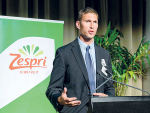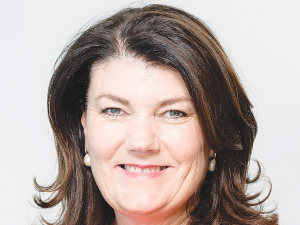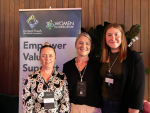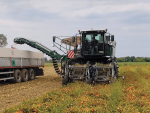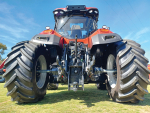Kiwifruit growers seem to have gotten the message from Zespri to focus on the quality of the fruit coming off the vines this year.
Zespri chief executive Dan Mathieson told Hort News that the conversations he’s had with major post-harvest partners shows that the quality of fruit coming through the system is much higher than it was a couple of years ago. He says in 2022 less than half the growers were actually out in their orchards monitoring the picking of their fruit, but this season it has jumped up to 90%.
“Growers are really focused on making sure that the fruit they have worked hard to grow well is being handled with care as it comes off the vine, into the bins and onto the post-harvest packhouses,” Mathieson says.
“As a result of growers new vigilance on the picking of the fruit, we are seeing much higher quality fruit flowing through our supply chain and into market.”
Last season, poor quality fruit cost the kiwifruit sector about $500 million dollars, but worse still, it caused considerable adverse reaction from buyers of our fruit. Zespri was a put on a warning to sort the quality issue out pronto.
“Zespri had to do some fast talking to assure customers they would do better this year. It conducted a significant communications programme with growers to place greater emphasis on quality control at the orchard level.”
Mathieson says back in 2022, because of Covid and closed borders, there were not enough pickers to manage the crop well.
“So, they were rushing it and that meant there was more fruit going into a bin that had scuffs and nicks and bruises,” he explains.
“Some of that fruit went into the supply and it got worse and softened and we saw high levels of rots in our fruit coming through. That meant that more fruit had to be repacked because of the poor quality.”
But while the quality of the NZ kiwifruit crop will be up this season, the volume will be down. This Mathieson says is due to multiple weather events – floods, frost and cyclones – which have taken a huge toll.
He says some kiwifruit orchardists lost their entire crop and others in Hawke’s Bay and Gisborne have had part or all of their orchards wiped out by Cyclone Gabrielle.
He says, as the season draws to a close, NZ will run out of kiwifruit and the gap in the market will be filled by kiwifruit which is grown under license to Zespri in northern hemisphere countries such as Italy.



